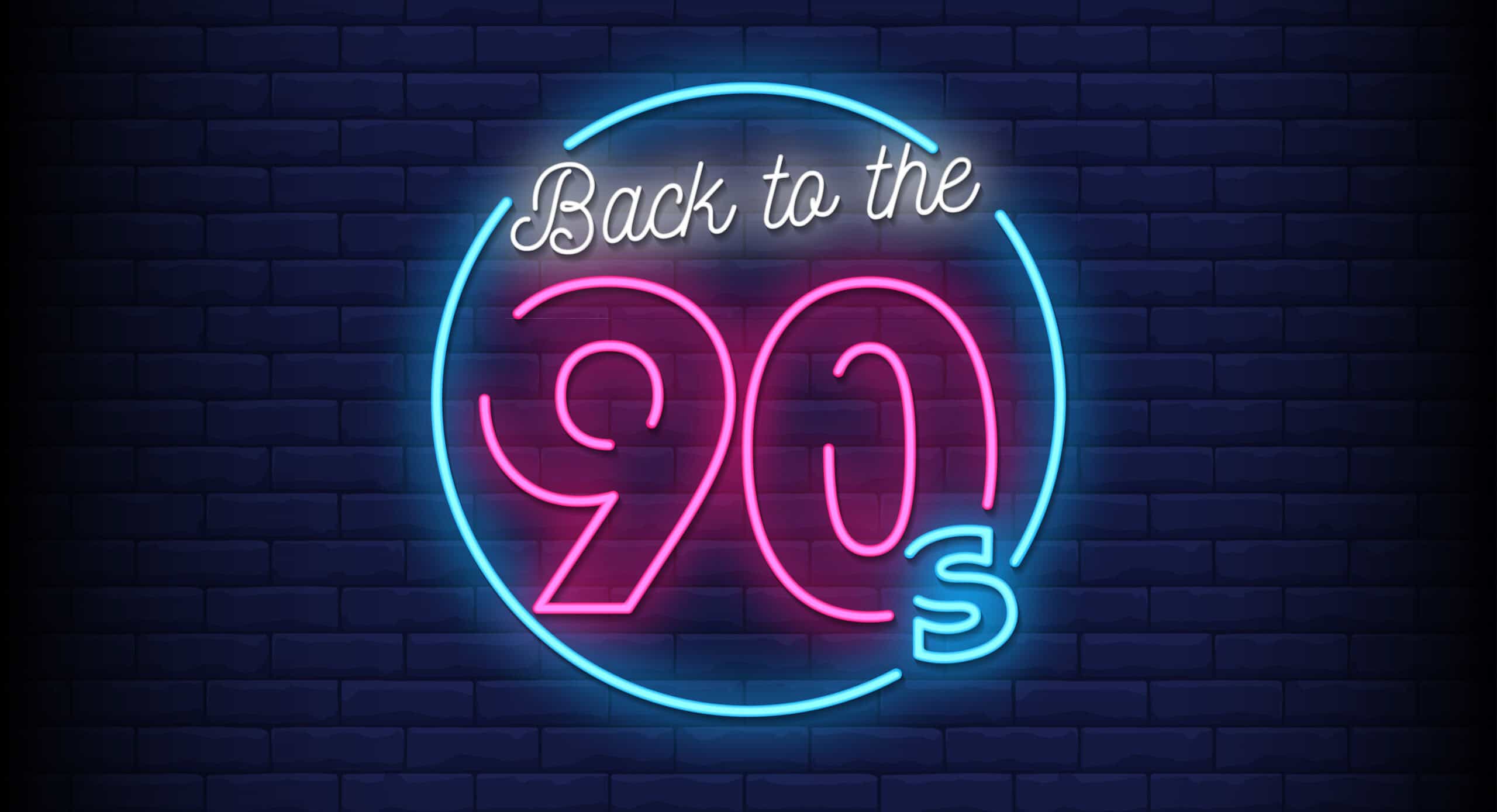The final decade of the 20th century witnessed a remarkable shift in the way people interacted with technology.
Portable music transitioned from analog cassettes in Walkmans to the digital clarity of Compact Discs, marking a significant change in consumer habits and preferences.
At the same time, the increased use of pagers represented a shift towards a new level of connectivity.
This burgeoning desire for constant communication laid the groundwork for the profound changes in personal and technological interconnectivity that characterized the subsequent years.
World Wide Web
In the early 1990s, a vision for a universal information system materialized, fundamentally altering the way data was shared on a grand scale.
Tim Berners-Lee, a pioneering British computer scientist, implemented a concept that weaved together hypertext documents into a digital tapestry, embedding multimedia elements for a richer user experience.
Previously, the exchange of digital information had been confined to select entities such as governmental and academic institutions.
Berners-Lee’s revolutionary World Wide Web democratized this process, leveraging the existing internet infrastructure to provide a more inclusive platform for information sharing and discovery.
Central to this internet evolution was a client-server model, which facilitated the delivery and display of content via a browser—a software that has become an indispensable tool for navigating the web.
The foundational technologies that underpin this digital ecosystem include:
- Hypertext Markup Language (HTML): For structuring and presenting content on the internet
- Hypertext Transfer Protocol (HTTP): Dictates the rules for transmitting documents
The debut website emerged on December 20, 1990, with a simplicity that belies the complexity and richness of today’s internet.
Operating from a NeXT Computer, Berners-Lee developed both the first web browser and server, pioneering the integration of multimedia content into browsers.
Fast forward to the present, the World Wide Web has evolved into a critical facet of day-to-day life. Below are some of the roles it plays:
- Communication: People interact via social media, forums, and email, and engage in voice or video calls.
- Information and Learning: Users tap into a wealth of knowledge for personal growth and education.
- Commerce: Businesses and consumers transact through innovative e-commerce platforms.
- Entertainment: A variety of digital entertainment is accessible on-demand.
The web’s rapid expansion since its inception has cemented its position as an integral part of modern existence, touching nearly every aspect of our daily routines and activities.
DVDs
Digital Versatile Discs (DVDs) emerged as a revolutionary format in the digital media landscape during the early 1990s. They represented a significant leap from the once-prevalent Video Home System (VHS) cassettes, which had won the format war against Betamax despite lower resolution and a bulkier size.
The innovations brought forth by DVDs included not just improvements in video quality but also a fundamentally more compact and convenient form.
Evolution from Analog to Digital:
- VHS was the dominant format through the ’80s.
- 1993 saw Sony and Philips’ attempt with the MultiMedia Compact Disc.
- Toshiba and allies developed the Super Density Disc as a competitor.
The transformation began with collaborative efforts from industry giants such as Sony and Philips, who sought to offer high-fidelity digital media through the MultiMedia Compact Disc. Meanwhile, Toshiba, alongside other companies, proposed the Super Density Disc.
Both vied for supremacy in the market, ready to set the standard for the future of home video consumption.
Collaboration for a Unified Format:
- Top computing companies demanded a single standard.
- DVD was born from a compromise between MMCD and SD formats.
However, instead of a protracted battle as seen with VHS and Betamax, leading computer manufacturers intervened.
Companies like IBM, Apple, Compaq, Hewlett-Packard, and Microsoft collectively pushed for a unified standard.
This unprecedented move led to the amalgamation of the best aspects of both MMCD and SD, resulting in the conception of the DVD.
Advantages of DVDs:
- Enhanced portability and convenience.
- Superior video and sound quality.
- Increased storage capacity for media.
DVDs offered not just a transition from analog to digital, but also added value to the consumer experience.
Beyond high-resolution video, DVDs were lauded for their interactive capabilities. They enabled direct scene access, language options for subtitles, and were often enriched with special features such as director’s comments or bonus content.
Value-Added Features:
- Interactive menus for scene selection.
- Multilingual subtitles and audio tracks.
- Bonus content including behind-the-scenes footage and interviews.
Text Messaging (SMS)
The advent of mobile phones in the ’70s represented a significant leap in telecommunications. However, these devices, initially bulky and expensive, only became widespread in the ’90s as they evolved into compact, affordable tools essential for everyday communication.
Alongside features like customizable ringtones and integrated cameras, a key functionality emerged that would remarkably alter human interaction: text messaging, also known as SMS (Short Message Service).
In 1992, text messaging was born when Neil Papworth transmitted the inaugural SMS containing a festive greeting to Richard Jarvis of Vodafone. Although it marked a pivotal innovation, the functionality did not gain immediate popularity.
This was partly due to the limitations of devices at the time, which were equipped with small screens and relied on a numeric keypad for text input, making message composition laborious.
Despite its sluggish start, SMS gained traction as mobile phone manufacturers introduced devices with QWERTY keyboards, like the T-Mobile Sidekick. This feature simplified text input significantly, catalyzing the adoption of SMS.
Indeed, by 2007, the volume of text messages eclipsed the number of phone calls made by Americans.
Fast forward, SMS has evolved beyond basic text to encompass multimedia messaging, carving a niche in the tapestry of modern communication. Today, countless messaging applications leverage the framework laid out by SMEs, often serving as the preferred communication method.
MP3s
The digital transformation of music largely revolves around a dominant audio format: the MP3. This compression technology emerged from the collective efforts of an assembly known as the Moving Picture Experts Group, formed in 1988 to set audio encoding benchmarks.
The Fraunhofer Institute in Germany assumed a pivotal role in fostering the MP3 format. A central figure in the team from Fraunhofer Institute, Karlheinz Brandenburg, played a crucial role in developing the MP3 and is often hailed as the format’s progenitor.
“Tom’s Diner” by Suzanne Vega holds the distinction of being the first track encoded into an MP3. Despite facing numerous obstacles, by 1992, the team managed to produce an audio file with a fidelity indistinguishable from its CD counterpart.
Despite the technological breakthrough, the format did not immediately resonate within the music industry, as many insiders found it overly complex. Nevertheless, the MP3 format eventually proliferated, catalyzing both lawful and unauthorized distribution, and became a mainstay on mobile phones and devices like iPods.
This technological leap in the ’90s was instrumental in the shift from analog to digital, embracing the larger trend of digitalization that had been in progress for years. This era reflected a pivotal transition, ushering in a communication evolution that defines our contemporary digital landscape.









